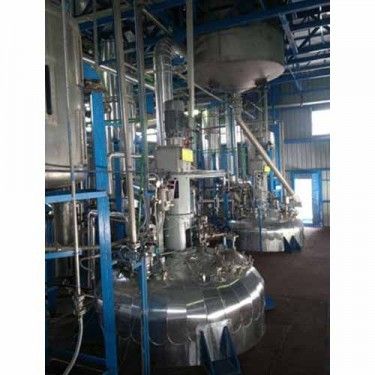The laboratory reactor is equipped with a vesselwith a wide mouth for convenient loading of components. In this case, the reaction flask must be tightly closed to prevent splashing and reduce heat loss.
The laboratory reactor is equipped with a vesselwith a wide mouth for convenient loading of components. In this case, the reaction flask must be tightly closed to prevent splashing and reduce heat loss.
So, the lid serves for:
• tightness of the container;
• isolation of content from the external environment;
• connection of additional equipment to the reactor.
Laboratory reactor covers are usually produced with several outlets for connecting auxiliary devices. Usually these are overhead stirrer, temperature sensor, drip funnel, heaters. Other instruments, measuring devices can also be used.
Caps, like reactors, depending on the purpose of use, are made of different materials:
• laboratory borosilicate glass;
• plastic;
• of stainless steel.
Varieties of cover designs
Suitable lids are available for reaction vessels of different sizes. By the nature and type of reaction, it is necessary to use a certain amount of additional equipment, therefore they differ in the number of outputs. The number of taps in the lids of laboratory reactors ranges from 1 to 5-6, in industrial ones there may be even more. If any of the bends is not used during the task, it is plugged with a plug.
For reactions where a tight connection is required, or vibration is observed in the process, it is recommended to use closing elements with outlets on thin sections or made for screw connections. For the possibility of connecting flexible pipes, hoses, special pipe bends are made.
There are models with a flat rim along the edge, which is needed to fix a special holder on it that secures the lid.
Stirred laboratory reactors: description and application
The result of manytechnological processes related to chemical reactions, as well as laboratory experiments, depends on the quality of mixing of the components. Reactions go on for some time, and aggregates of a certain type are used to maintain the desired state of substances.
From a design point of view, it is a vertical overhead stirrer reactor. The stirrer shaft is inserted into the center hole of the cover, and when the motor is turned on, the stirrers mix the contents.
The characteristics of the stirrer, such as the type of stirring attachment, engine power, rotation speed, are selected depending on the characteristics of the chemical process.
Application
Stirred laboratory reactors are used in particular for:
• increasing the reaction rate;
• mixing of liquid, pasty, pasty and bulk materials;
• mixing several media into a homogeneous mass,
• ensuring the same temperature throughout the volume.
The solution to these problems is required in various industries: chemical, pharmaceutical, petrochemical, mining, food, etc.
Here are just a few examples of the use of stirred laboratory reactors.
• They are used in processes based on flotation methods for mineral processing or water purification. They are irreplaceable in the development of new products in the cosmetic, perfumery and food industries: creams, perfumes, sauces, drinks.
• Units equipped with a stirrer and heating system are used to monitor the progress of the reaction: they measure the temperature profile, heat distribution over time, enthalpy, etc.
• Agitators are common in leach reactions. In this case, the material of the reaction vessel is important. It must be made of a material that is insensitive to aggressive media, such as polypropylene.
Stalwart International, One of the best Chemical reactor manufacturers in Mumbai





